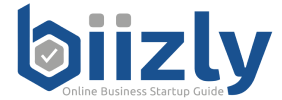As layoffs continue at Amazon, Alphabet (Google’s parent company), Microsoft, Salesforce, Dell, IBM, SAP, PayPal, Wayfair, Yahoo and other companies, you may be wondering whether to start looking for a new job or should you start a business.

Losing a job can be a stressful and challenging experience. However, with the rise of e-commerce and online business opportunities, getting laid off could also be an opportunity to start your own business online. In fact, many entrepreneurs have started their businesses after being fired from their day jobs. (See examples below)
There are numerous advantages to launching an online business, such as the ability to keep initial costs low, the flexibility to work from anywhere at any time, a vast customer base to tap into, a range of potential income streams and business models, and many more. Anyways, starting your own business after losing your job can be challenging due to the potential income shortfall, unless you have saved enough to cover your expenses during the initial phase of your business. Fortunately, you could bypass this stage by starting a freelancing career at Upwork and/or Fiverr that could not only bring fast income but could also complement your online business if they are in the same industry or utilize the same skills.
So, how to get started? If you’re considering starting an online business, here are some key steps to follow:
1. Do research and develop a business idea
Starting an online business can be a lucrative and rewarding endeavor, but it’s important to do your research and develop a solid business idea before getting started. Begin by identifying a gap in the market or a need that’s not being met. Conduct market research to evaluate the competition and identify your target audience. Consider your own skills and interests and think about how you can leverage them to create a unique value proposition. Once you have a clear business idea, you can move on to the next step.
2. Chose an income type and a business model
Choosing an income stream and a business model is a crucial decision that will shape the future of your online business. You can sell products or services directly to customers, or you can offer them through a third-party platform. You can also generate income through advertising, sponsorships, or affiliate marketing. When selecting a business model, consider factors such as scalability, profitability, and sustainability. It’s important to choose a model that aligns with your values and goals, and that you’re comfortable implementing. Once you’ve decided on an income type and a business model, you can move on to the next step.
3. Establish initial web presence (Start a website)
Establishing an initial web presence is an essential part of launching an online business. Your website is your virtual storefront, and it’s often the first point of contact for potential customers. Start by choosing a domain name that’s easy to remember and relevant to your business. Then, create a professional-looking website that’s optimized for search engines and mobile devices. Use high-quality images and compelling content to showcase your products or services, and make it easy for visitors to find what they’re looking for. You may also want to consider integrating social media into your website to increase engagement and build a community around your brand. Don’t wait to long to start your initial website. You will have time to make it perfect as you develop your online business.
4. Develop marketing strategy
Developing a marketing strategy is crucial to the success of your online business. Once you’ve established your web presence, you need to attract visitors and convert them into customers. Start by identifying your target audience and creating buyer personas. Then, develop a messaging strategy that speaks directly to their needs and interests. Consider using a mix of paid and organic channels to drive traffic to your website, such as search engine optimization (SEO), pay-per-click advertising (PPC), social media advertising, and content marketing. It’s important to track your results and adjust your strategy as needed to maximize your return on investment.
5. Lunch your online business
Finally, it’s time to launch your online business! Make sure everything is in place, including your website, marketing strategy, and any necessary licenses or permits. Start promoting your business through your network and online channels. Stay flexible and open to feedback and be willing to adapt as you learn more about your customers and the market. With persistence and hard work, you can build a successful online business that brings value to your customers and fulfillment to your life.
Conclusion
Being laid off from a job is a bad news, but it can also be an opportunity to start a new chapter in your life. With the rise of e-commerce and online business opportunities, starting your own business online has never been easier. By following the key steps outlined in this article, you can develop a solid business idea, choose the right income stream and business model, establish a web presence, develop a marketing strategy, and finally launch your online business. While it may take hard work and persistence to succeed, starting your own business can be a rewarding and fulfilling experience that brings financial stability and personal satisfaction. So, if you’ve been laid off or are considering a new career path, don’t be afraid to take the leap and start your own online business today.
Sources:
(Examples of entrepreneurs that lost their jobs before they started their business)
- Mailchimp – Co-founder Ben Chestnut started Mailchimp after being laid off from a web design consulting job.
- 5 Entrepreneurs That Got Fired And Got The Best Revenge: Success
- Some lose a job and become an entrepreneur
- 5 Steps to Starting a Business After a Job Loss
- Losing your job can be a catalyst for starting a business
- Making Sense of the Future After Losing a Job You Love



